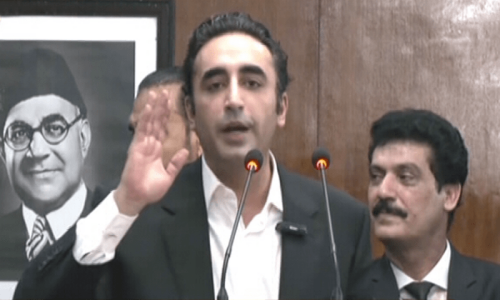NEW YORK, Oct 20: The dollar fell to a record low against a basket of currencies on Friday after a draft statement from the Group of Seven nations failed to address the greenback’s weakness, suggesting they would not step in to prop it up.
The US unit also fell to three-week lows versus the yen as the statement urged China to allow for a faster appreciation of its yuan currency.
The Chinese currency has risen about 8 per cent against the dollar since the government revalued it in July 2005, but according to some bank estimates, it is still roughly 20 percent to 25 percent overvalued.
The yen, Asia’s most liquid currency, often trades as a proxy for the tightly controlled yuan.
Analysts said the G7 draft statement, which did not mention the euro, yen or dollar, signaled that the US currency’s weak trend will continue. The official statement will be released later on Friday.
The G7 statement is as expected and should be a green light to dump the dollar, said Brian Dolan, director of currency research at Forex.com in Bedminster, New Jersey.
The dollar index, a gauge of the greenback’s value against six major currencies, fell to 77.363, its lowest level since its inception more than 30 years ago after the Bretton Woods exchange rate agreement broke down. By late afternoon trading, the dollar index was down 0.3 per cent at 77.380.
The yen rose to a three-week high of 114.52 per dollar after the G7 statement, with declines in US stocks giving it a boost. The yen last traded at 114.54 to the dollar, up 0.8 per cent on the day.
Against the euro, the yen rose 0.8 per cent to 163.71 per euro, also a three-week high.
The euro was little changed against the dollar at $1.4293, after hitting a life-time peak of $1.4319 earlier, according to Reuters data.
With the G7 meeting out of the way, traders are expected to focus again on the dollar’s economic fundamentals.
Sentiment on the US dollar has been bearish in recent sessions amid a growing view a US economic slowdown will force another interest rate cut by the Federal Reserve this month. Weak US data and poor results from several heavyweight US banks have fueled expectations of a growth-boosting but dollar-negative rate cut on Oct. 31.
The futures markets on Friday showed a 98 per cent chance of a one-quarter percentage point easing at the October Federal Open Market Committee meeting, up from 72 per cent overnight and 32 percent a week ago.
Weaker US housing and jobs data, heavy Q3 write-downs by some large US banks, and, foremost, the spike in oil prices to over $90 refocused investor attention back to downside economic risks, said JP Morgan Chase in a research note.
The Canadian dollar surged to a 31-year high against the greenback at around C$0.9635 per US dollar, after oil prices jumped to a record high above $90 per barrel and earlier data showed a larger-than-expected rise in Canadian core inflation in September. By late afternoon, the US dollar was down 0.8 percent at C$0.9665.
Oil prices fell to $88.35 per barrel in late trading, but the Canadian currency remained well bid.---Reuters












































Dear visitor, the comments section is undergoing an overhaul and will return soon.